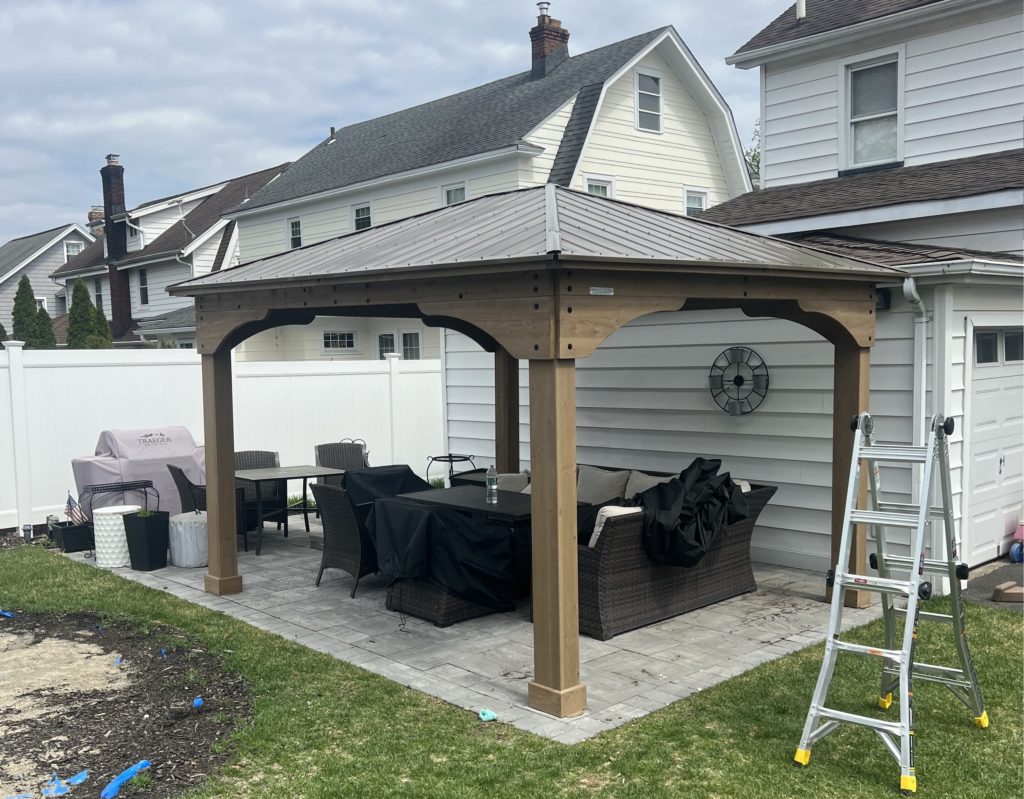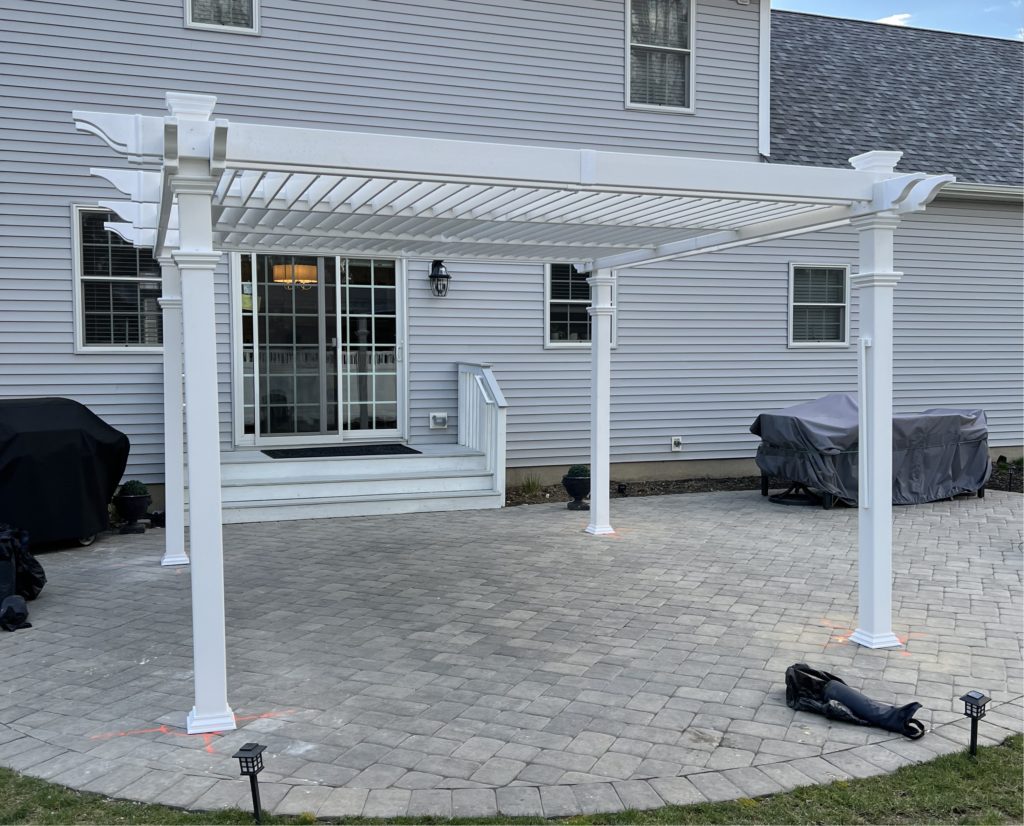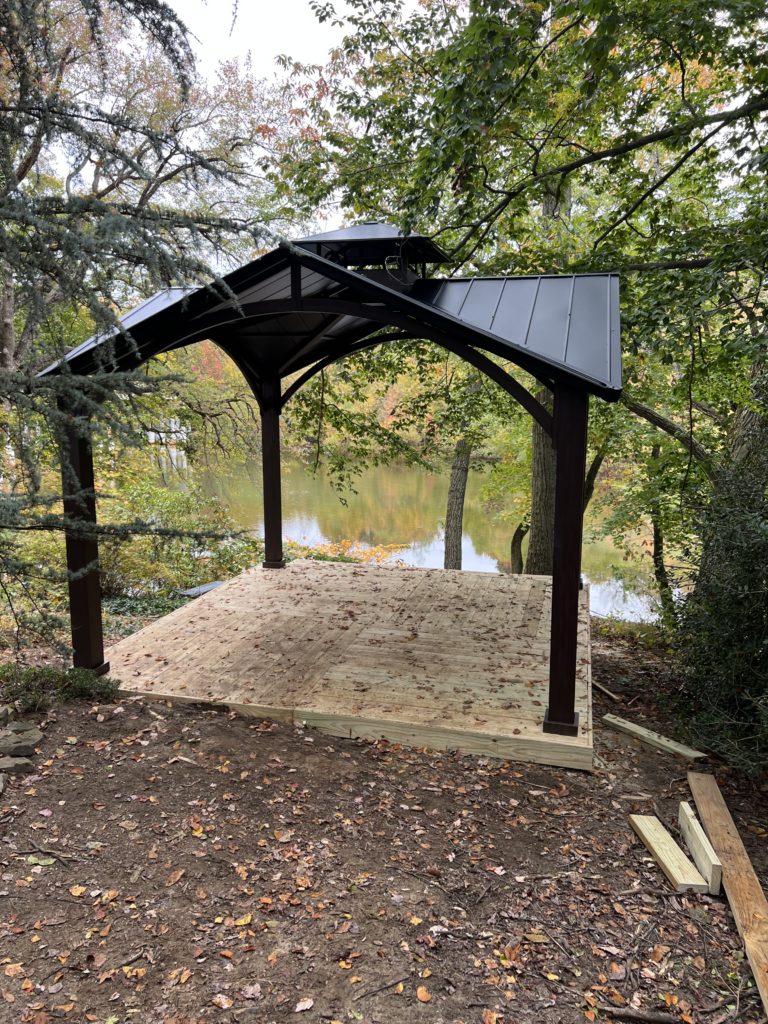When it comes to keeping your home cool and comfortable during the hot summer months, a reliable ceiling fan is a must-have. Ceiling fans not only provide a refreshing breeze, but they can also help reduce energy costs by circulating the air and reducing the need for air conditioning. If you’re in Franklin Park NJ, and in need of ceiling fan installation, replacement or repair services, look no further.
OUR CONTACT
Email Support:
info@gazebo-installation.com
Ask your question:
info@gazebo-installation.com
Some of Our Portfolio Gazebo and Pergola Assembly Projects



At our company, we specialize in all things ceiling fan related. Whether you’re looking to install a brand new fan, replace an old and outdated one, or need some repairs and maintenance done on your existing fan, our team of skilled technicians is here to help. With years of experience in the industry, we have the knowledge and expertise to get the job done efficiently and effectively.
When it comes to installation, proper mounting and wiring are crucial to ensure the fan operates safely and efficiently. Our team will carefully assess your space and determine the best location for the fan, taking into consideration factors such as ceiling height and available electrical connections. We will then expertly install the fan, ensuring it is securely mounted and wired correctly.
In some cases, you may find yourself in need of a replacement fan. Whether your current fan is old and worn out, or you simply want to upgrade to a newer model with more features, our team can assist you in finding the perfect replacement fan for your needs. We work with top manufacturers and can help you choose a fan that fits your style and budget.
Finally, if you’re experiencing any issues with your ceiling fan, such as strange noises, wobbling, or a lack of proper airflow, our technicians are skilled in diagnosing and repairing these problems. We will assess the situation, identify the root cause of the issue, and provide you with a cost-effective solution to get your fan back in optimal working condition.
Don’t let the heat get the best of you this summer. Contact us today for all your ceiling fan installation, replacement, and repair needs in Franklin Park NJ. Stay cool and comfortable with our professional services.
Ceiling Fan Installation: A Step-by-Step Guide for Franklin Park NJ Residents
If you are a resident of Franklin Park NJ and looking to install a new ceiling fan in your home, you might be wondering where to start. Installing a ceiling fan may seem like a daunting task, but with the right tools and step-by-step guide, it can be a relatively straightforward process.
Before you begin the installation process, it is important to ensure that you have all the necessary tools and materials. These typically include a ladder, screwdriver, wire stripper, electrical tape, pliers, and of course, the ceiling fan kit itself. It is also crucial to turn off the power to the room at the circuit breaker before you begin any electrical work.
To start the installation, begin by assembling the fan according to the manufacturer’s instructions. This usually involves attaching the fan blades to the motor housing and securing any additional components such as light fixtures or remote control receivers. Make sure to tighten all screws and connections securely.
Next, locate the ceiling joist or support beam where you want to install the fan. Use a stud finder to locate the joist and mark its position on the ceiling. This will ensure that the fan is properly supported and prevent any accidents or damage. Once you have marked the spot, drill a pilot hole for the fan bracket and secure it to the ceiling using the provided screws.
Now, it’s time to connect the electrical wiring. Carefully feed the wires from the ceiling through the downrod of the fan. Match the color-coded wires from the fan to the corresponding wires in the ceiling junction box and twist them together using wire nuts. Cover the wire connections with electrical tape for added safety.
Finally, attach the fan to the bracket by aligning the mounting screws and turning them clockwise to secure the fan in place. Once the fan is securely attached, double-check all the connections and make sure everything is tightened properly. Turn on the circuit breaker and test the fan to ensure it is functioning correctly.
Ceiling fan installation may require a certain level of electrical expertise, and if you are unsure about any aspect of the process, it is always recommended to consult a professional. Hiring a licensed electrician in Franklin Park NJ can ensure that your ceiling fan is installed safely and efficiently.
Planning and Preparation for Ceiling Fan Installation
Installing a ceiling fan in your home can provide numerous benefits, from improving air circulation to reducing energy costs. However, before you begin the installation process, it is important to properly plan and prepare for the project. Taking the time to gather the necessary tools, assess the electrical wiring, and choose the right location for your fan will ensure a successful installation.
1. Gather the necessary tools: Before starting the installation, make sure you have all the tools you’ll need. These may include a screwdriver, wire cutters, pliers, a ladder, a voltage detector, electrical tape, and a circuit tester. Having these tools readily available will save you time and frustration during the installation process.
2. Assess the electrical wiring: Checking the electrical wiring in the area where you plan to install the ceiling fan is crucial. Ensure that the existing wiring can support the additional load of the fan and that the electrical box is rated to hold the weight of the fan. If necessary, consult a professional electrician to make any necessary upgrades or modifications to the electrical system.
3. Choose the right location: The location of your ceiling fan can greatly impact its effectiveness. Ideally, it should be placed in the center of the room where it can provide optimal air circulation. Consider the size and layout of the room, as well as any furniture or fixtures that may obstruct the fan’s airflow. Additionally, check the ceiling height to ensure proper clearance for the fan blades.
4. Read the manufacturer’s instructions: Before you begin the installation, carefully read the manufacturer’s instructions that come with the ceiling fan. Familiarize yourself with the step-by-step process, safety precautions, and any specific requirements or recommendations provided by the manufacturer. Following these instructions will help ensure a safe and efficient installation.
5. Secure the necessary permits: In some areas, a building permit may be required for ceiling fan installation. Check with your local building department to determine if a permit is needed, and if so, make sure to obtain it before beginning the installation. Failure to obtain the necessary permits can result in fines or complications down the line.
Taking the time to plan and prepare for your ceiling fan installation will help ensure that the project goes smoothly and that you can enjoy the benefits of your new fan for years to come.
Tools and Materials Needed for a Successful Ceiling Fan Installation
Installing a ceiling fan requires a few essential tools and materials to ensure a successful and safe installation. By having the right equipment on hand, you can save time and avoid any unnecessary complications during the process. Here are the must-have tools and materials for a smooth ceiling fan installation:
1. Screwdriver:
A screwdriver is indispensable when it comes to assembling the various components of a ceiling fan, such as the blades, motor, and mounting bracket. A Phillips head screwdriver is commonly used for most ceiling fan installations.
2. Wire Cutters:
Wire cutters are necessary for trimming and stripping the electrical wires during the installation process. They help create clean cuts and remove any excess insulation, ensuring a proper electrical connection between the fan and the power source.
3. Voltage Tester:
A voltage tester is crucial for checking the electrical connections before and after installation. By verifying the presence or absence of electrical current, you can prevent any accidents or mishaps during this process.
4. Ladder:
A sturdy ladder is essential for accessing the ceiling area where the fan will be installed. It is important to use a ladder that is appropriate for the height of your ceiling to ensure your safety throughout the installation.
5. Pliers:
Pliers come in handy for tightening screws and bolts during the installation, as well as adjusting the fan’s pull chains. They provide added leverage and ensure a secure and stable installation.
6. Electrical Tape:
Electrical tape is used to insulate and secure the wire connections. It provides an extra layer of protection against any potential electrical hazards and helps keep the wires organized and neat.
Additionally, other materials required for a successful ceiling fan installation include a new or replacement ceiling fan, mounting hardware, wire connectors, and a utility knife.
Remember, it is important to refer to the specific manufacturer’s instructions and guidelines for your ceiling fan model, as the tools and materials required may vary.
Wiring and Electrical Considerations for Ceiling Fan Installation
Installing a ceiling fan requires careful attention to wiring and electrical considerations to ensure a safe and efficient operation. Here are some important factors to consider:
1. Electrical Box:
Before installing a ceiling fan, ensure that the electrical box can support the weight and movement of the fan. It is recommended to use a UL-listed electrical box specifically designed for ceiling fans.
2. Power Supply:
Ensure that the power supply to the installation location can handle the electrical load of the ceiling fan. Consider the wattage and amperage requirements of the fan to ensure compatibility with the existing electrical circuit.
3. Wiring Connections:
Follow the manufacturer’s instructions for wiring the ceiling fan. Typically, the fan will have separate wires for the fan motor, fan light, and any additional features. Use wire connectors to securely connect the wires and ensure proper insulation.
4. Grounding:
Proper grounding is essential for electrical safety. Ensure that the ceiling fan is properly grounded to prevent electrical shock. Connect the grounding wire from the fan to the grounding system of the electrical circuit.
5. Wall Switches and Controls:
Consider the type of controls you want for your ceiling fan. You can use a wall switch to control the fan and light separately or opt for a remote control system. Ensure that the wiring and switches are compatible with the controls you choose.
6. Compliance with Electrical Codes:
Ensure that the ceiling fan installation complies with local electrical codes and regulations. It is essential to follow safety guidelines and obtain necessary permits, if required, to ensure a safe and code-compliant installation.
In conclusion, proper wiring and electrical considerations are crucial for a successful ceiling fan installation. Paying attention to electrical box support, power supply, wiring connections, grounding, controls, and compliance with electrical codes will ensure a safe and efficient operation of your ceiling fan.
OUR CONTACT
Email Support:
info@gazebo-installation.com
1126 Falls Terr, Union NJ 07083
Ask your question: info@gazebo-installation.com